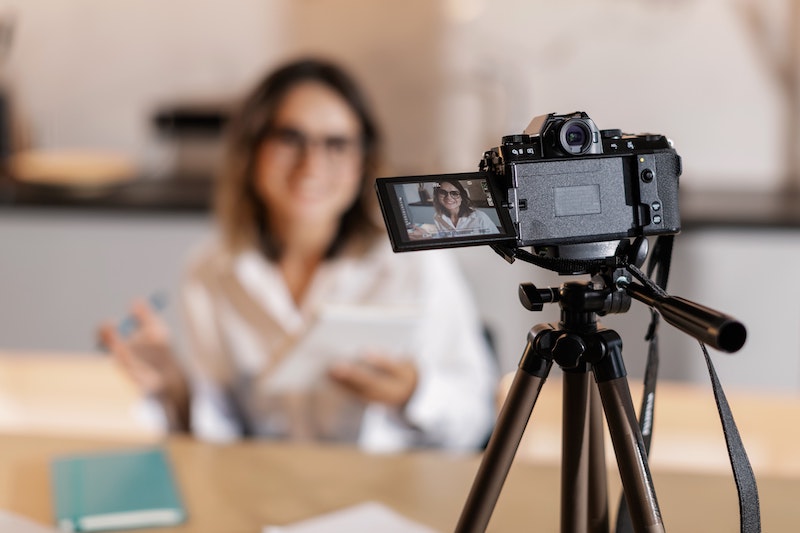The most compelling and lucrative way to share ideas or products with the world is through vlogging, YouTube, and TikTok. And choosing the right camera is crucial to creating high-quality content to engage an audience. In this article, we reveal the features to consider when selecting a camera for social media, and we’re listing the best four-thirds cameras for entry-level videographers and professionals.
The essential features of a camera for videography include a front-facing flip-out screen that allows a user to see themselves while recording, fast and accurate autofocus, good image stabilization to prevent shaky footage, an external microphone port for better audio quality, and Wi-Fi or Bluetooth connectivity to quickly transfer videos to your phone or computer for editing and sharing.
to see themselves while recording, fast and accurate autofocus, good image stabilization to prevent shaky footage, an external microphone port for better audio quality, and Wi-Fi or Bluetooth connectivity to quickly transfer videos to your phone or computer for editing and sharing.
In this article, we’re focusing on the micro four-thirds cameras that have most of these features. We prefer the MFT mirrorless cameras
that have most of these features. We prefer the MFT mirrorless cameras because they offer powerful video capabilities, have the option of interchangeable lenses, and they are light enough to carry around all day while hunting for vlogging opportunities. Here are the best ones we’ve found.
because they offer powerful video capabilities, have the option of interchangeable lenses, and they are light enough to carry around all day while hunting for vlogging opportunities. Here are the best ones we’ve found.
Panasonic Lumix G100
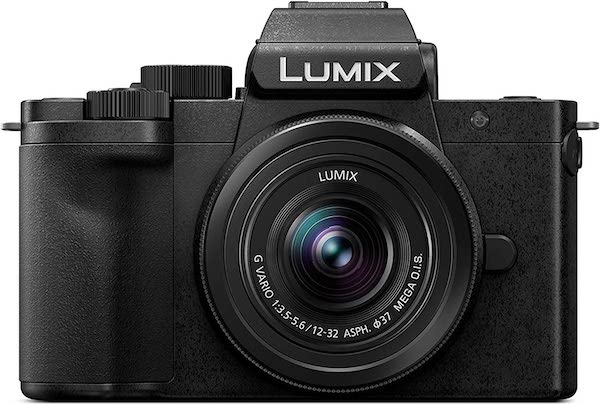
At the lowest end of the price range for a good micro four-thirds camera suitable for vlogging, YouTube, and TikTok is the Panasonic Lumix G100. This is a compact mirrorless camera
suitable for vlogging, YouTube, and TikTok is the Panasonic Lumix G100. This is a compact mirrorless camera that delivers high-quality video. Being easy to use makes it ideal for beginners who want to try their hand at creating quality content for social media
that delivers high-quality video. Being easy to use makes it ideal for beginners who want to try their hand at creating quality content for social media .
.
The reason it’s seen as an entry-level camera rather than a professional device is that it doesn’t have physical image stabilization; it uses an electronic (EIS) system in video mode that works in sync with in-lens stabilization. The G100 also has a crop factor when recording 4K video. But on the plus side, it can record Full HD video at up to 120fps for sensational slow-motion clips.
rather than a professional device is that it doesn’t have physical image stabilization; it uses an electronic (EIS) system in video mode that works in sync with in-lens stabilization. The G100 also has a crop factor when recording 4K video. But on the plus side, it can record Full HD video at up to 120fps for sensational slow-motion clips.
The fully-articulated screen is great for self-recording, and its compact size and light weight (412g) make it easy to do hand-held shooting. When this rotating LCD screen is flipped toward the front of the camera, it switches into Video Selfie Mode. This automatically increases the depth of field, and combined with face recognition and tracking, it keeps the user’s face and most of the background in focus.
To keep things simple for the user, the Panasonic Lumix G100 incorporates a sophisticated set of three microphones and face-tracking technology to follow the presenter’s position. In windy conditions, the vlogger can take advantage of the G100’s port for an external microphone, but be aware that this camera doesn’t have a headphone input, so monitoring the audio quality while recording is impossible.
The Panasonic G100 is well-suited for travel vlogging and home studio-style presentations. Compared to smartphone recording, this is a small investment for a big step up in quality video production.
Olympus PEN E-PL10
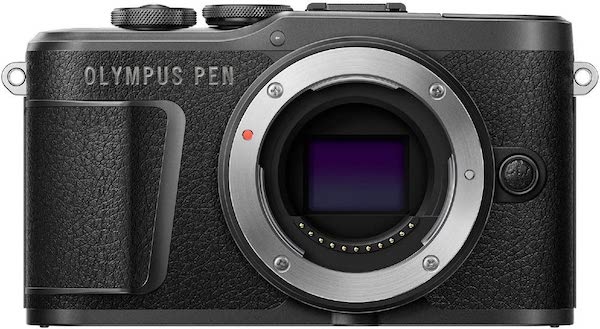
As an entry-level mirrorless camera, you can’t go past the Olympus PEN E-PL10 for vlogging, YouTube, and TikTok. The 16-megapixel sensor and 3-axis in-body image stabilization make it an ideal choice for beginners. Its 4K video, which is four times the resolution of Full HD video, means the recording will look sharp and clear when viewed on a large TV screen.
However, there is some rolling shutter distortion when panning too quickly, but it’s acceptable for a camera at this lower price point . Reducing recording quality to Full HD provides a 60p option that produces smoother video footage and offers special effect modes unavailable at 4K.
. Reducing recording quality to Full HD provides a 60p option that produces smoother video footage and offers special effect modes unavailable at 4K.
The Olympus PEN E-PL10 was explicitly designed for vloggers and has several features on its fully-articulated touchscreen that make it easy to create high-quality video content. In the ‘selfie position,’ there is an on-screen start button for videos and an option for skin enhancement. The focus point can be moved, and you can tap the screen to focus. Even in bright sunlight, the screen gives a clear view of the person in front of the camera.
The E-PL10 has a compact design that is small enough to fit into a pocket or handbag and weighs just over 300 grams. The E-PL10 has built-in Wi-Fi and Bluetooth connectivity for uploading content to a computer or smartphone, but this camera lacks microphone and headphone sockets. This is one of the lowest-priced cameras on this list, yet it feels robust and comfortable in the hands. It’s an appealing entry-level camera that has many redeeming features.
for uploading content to a computer or smartphone, but this camera lacks microphone and headphone sockets. This is one of the lowest-priced cameras on this list, yet it feels robust and comfortable in the hands. It’s an appealing entry-level camera that has many redeeming features.
Olympus OM-D E-M5 Mark III
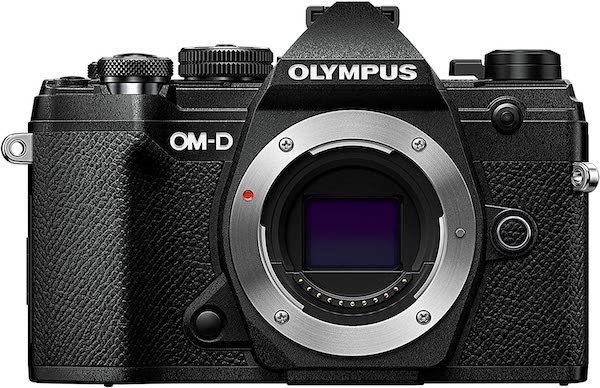
Vloggers love this micro four-thirds camera , and it’s easy to see why. It’s a versatile and compact camera
, and it’s easy to see why. It’s a versatile and compact camera with a fast phase-detect autofocus system and impressive 5-axis image stabilization that’s perfect for ‘run and gun’ handheld video recording.
with a fast phase-detect autofocus system and impressive 5-axis image stabilization that’s perfect for ‘run and gun’ handheld video recording.
Thanks to its pivoting and rotating 3-inch touchscreen, the presenter can stand in front of the lens and stay in the frame. The OM-D E-M5 Mark III is dust and splash resistant, so it can be used outdoors. It has weather seals on the battery compartment, the memory card cover, and every rotary wheel. And if dust does sneak in, Olympus has a dirt-repellent sensor coating combined with an ultrasonic sensor cleaning function to keep your images spotless.
This camera has a stereo microphone input for an external mic but doesn’t have a headphone jack for checking audio quality while filming. The Olympus EM5 Mark III features WLAN and Bluetooth for simple connectivity.
With its reasonable price and crisp 4K video performance, this mid-range model is an excellent choice for someone wanting to be creative with vlogging, YouTube, and TikTok.
Panasonic Lumix GH5ii
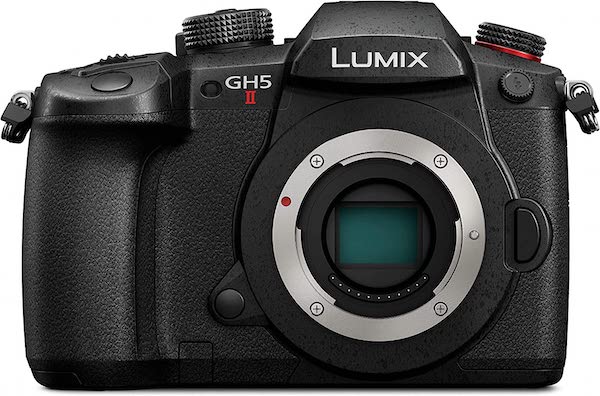
The Panasonic Lumix GH5ii has many features that make it an excellent choice for vloggers, such as high-quality 4K video recording, a flip-out 3-inch 1.84M-dot rear touchscreen for easy framing and monitoring, and in-body image stabilization. Compared to the previous cameras listed, the GH5ii is more expensive. Still, it has features such as microphone input and headphone output, which are essential for capturing high-quality audio for video content creation.
The GH5ii also has a rugged body, making it suitable for various environments. This camera is weather-sealed and frostproof (to -10C) and can shoot 4K and HD in various broadcast-quality formats without needing an external recorder. Using the Lumix Sync app, this camera can stream via Wi-Fi through a smartphone, and it has no recording limits. It directly streams in Full HD quality to YouTube, Facebook, or any RTMP/RTMPS-based platform. We also like the dual SD card slots for instant backups.
There are many advantages to this camera, but it has some disadvantages as well. The autofocus is fine for still photography , but it is slow to find and keep focus in video mode, especially when shooting at 24p. And at 729 grams, it’s almost twice as heavy as the OM-D E-M5 Mark III’s 414 grams, so recording for extended periods won’t be as comfortable as other cameras.
, but it is slow to find and keep focus in video mode, especially when shooting at 24p. And at 729 grams, it’s almost twice as heavy as the OM-D E-M5 Mark III’s 414 grams, so recording for extended periods won’t be as comfortable as other cameras.
Panasonic Lumix GH6
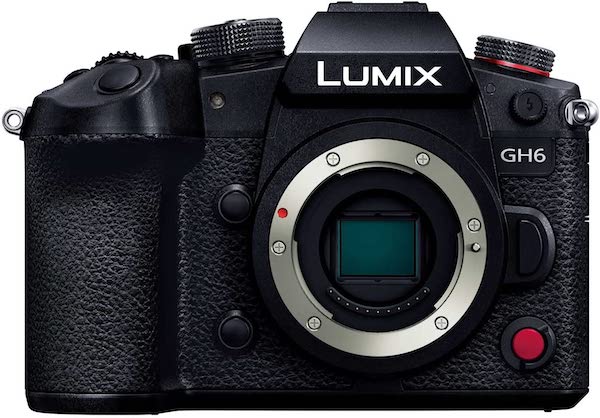
Released in 2022, this upgrade to the GH5ii camera takes micro four-third vlogging to new levels. It includes even more video options, but its larger body and higher price offset this advantage.
four-third vlogging to new levels. It includes even more video options, but its larger body and higher price offset this advantage.
The Lumix GH6 is the flagship camera within the Panasonic range due to its powerful processor, high-grade sensor, and improved 5-axis in-body image stabilization for steady recording. The image stabilization is so good that it’s possible to track and pan handheld shots without a gimbal.
Unfortunately, Panasonic continues to ignore that its autofocus is slower and less accurate than other manufacturers. This could be avoided if it dropped its contrast-based system and incorporated a hybrid option using both contrast and phase detection to deliver faster and more accurate results.
Contrast detection focusing affects its still photography, too, slowing this camera’s continuous autofocus. Photographers who require reliable continuous autofocus should look at the Olympus cameras instead. Of course, this won’t be a problem when shooting products, doing talking head videos, or recording interviews.
The other disadvantage of this camera is that wireless video live streaming is impossible. Videographers will have to buy the Panasonic GH5ii if this function is essential. But the Panasonic GH6 does have a forced-fan cooling system, which prevents overheating during long video recording sessions.
This camera is designed around video production. With its four-channel audio recording, the Lumix GH6 is one of the best consumer video cameras on the market. It even has a dedicated audio management button to allow level adjustments.
Panasonic’s choice of codecs (H.264 and H.265) for a higher level of compression and quality reflects their desire to see this camera (and the GH5ii) used in high-end video production. Independent filmmakers and serious content creators will struggle to find a hybrid camera with a more comprehensive list of recording options.
Final Thoughts
Due to their compact shape and lightweight bodies, micro four-third cameras are highly valued for their portability and versatility. Any cameras on this list will help videographers produce professional content for vlogs, YouTube, and TikTok.
are highly valued for their portability and versatility. Any cameras on this list will help videographers produce professional content for vlogs, YouTube, and TikTok.


